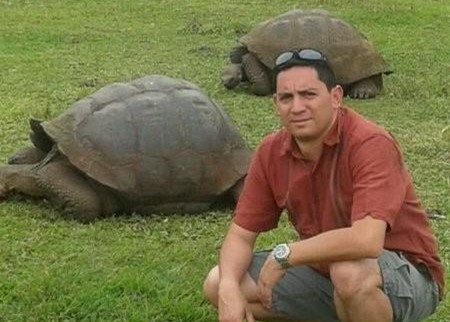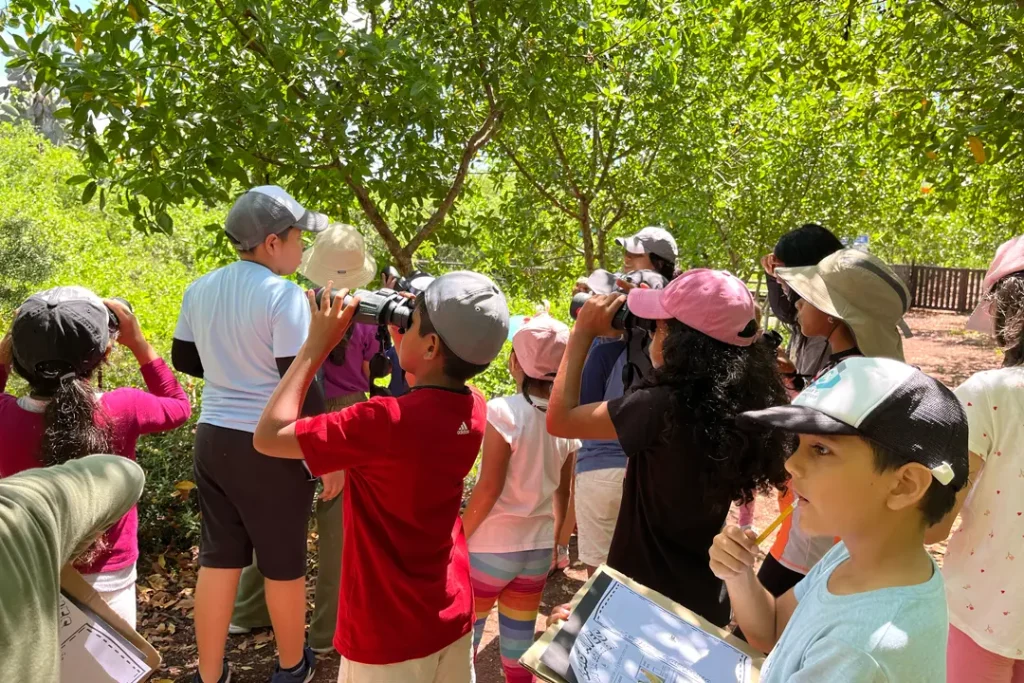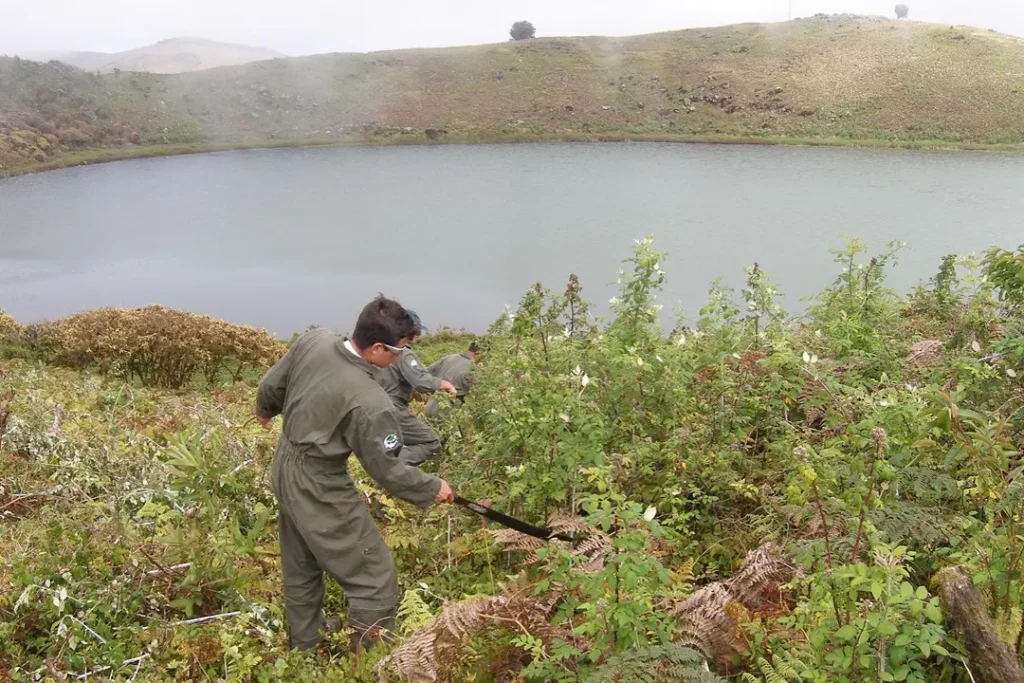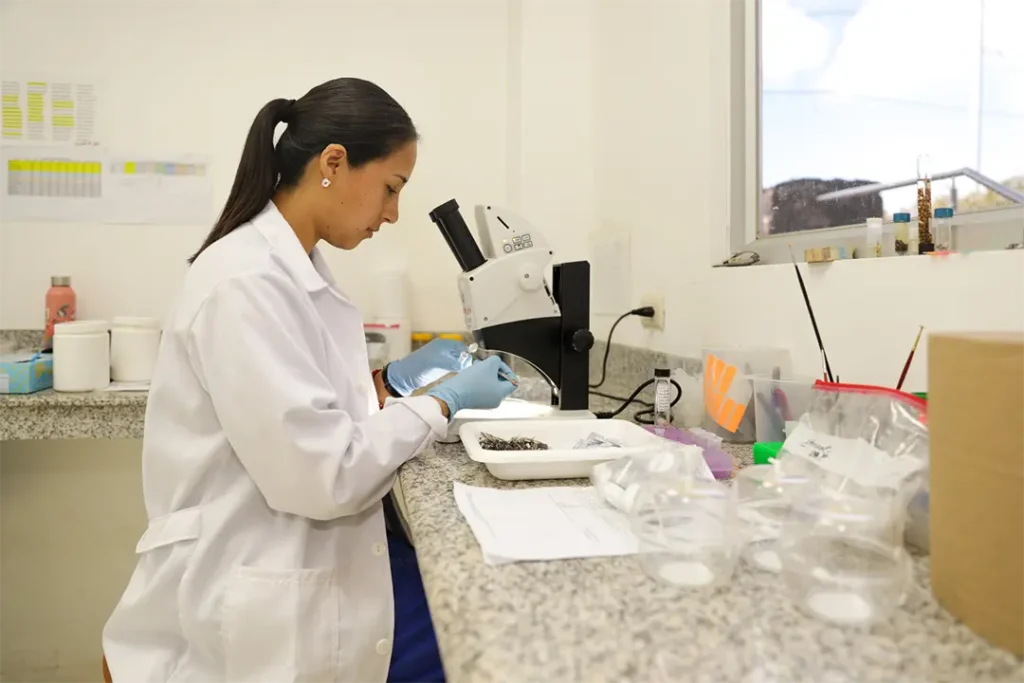The Galapagos Islands are famed worldwide for their incredible biodiversity and stunning natural landscapes. Traveling the islands is a once in a lifetime experience characterized by beauty and learning. While there are many cruises navigating the islands, the Hermes Galapagos Catamaran stands out not just for its luxurious essence but for the efforts it makes in order to make the trip sustainable.
Key Takeaways
- The ship is characterized by luxury with its upscale features.
- It is designed to host only 20 guests, the catamaran provides both privacy and sophistication while sailing through the Galapagos.
- The Hermes introduces new initiatives to become a pioneer in sustainable tourism.
The Galapagos Hermes Catamaran takes sail
The Hermes Catamaran represents a commitment to innovation and luxury travel. It’s a challenge to build a ship that can provide ultra luxxury. However, Via Natura, after years of development, launched the Hermes with the mission to offer a luxury experience tailored to discerning travelers. Its interior and exterior are designed to provide valuable experiences that feel otherworldly.
Ecuadorian company Via Natura took the initiative to bring this project to life. It was significantly shaped by Andrés Paez, who was instrumental in promoting the cruise. The Hermes is a key part of Via Natura’s broader mission to encourage sustainable tourism in Ecuador.

From ideal to reality: effort and time
Via Natura invested years of work from the initial concept to the actual putting together at a shipyard in Guayaquil to make the Hermes a reality. “This project is a product of hard work that today is a reality”, said Andrés Paez, the catamaran’s business developer.
Andres Paez has a clear ideal to promote the Hermes. Ecuador’s tourism offerings are on par with the world’s finest luxury destinations. In recent years, Ecuador has promoted the varied destinations it offers in the country and the Galapagos Islands have taken the spotlight. Therefore, the Hermes is betting on promoting Galapagos to a luxury market that can undergo beautiful experiences on a ship worthy of the waters of the islands. Overall, the Hermes Catamaran will provide a bridge between adventurous clients and the magical offerings of the archipelago.
The next big thing for Via Natura
Under the leadership of General Manager Esteban Velázquez, Via Natura views this accomplishment as a new beginning. Their goal is to offer refined, sustainable tourism in one of the planet’s most valuable ecosystems.
Accommodations onboard the Hermes
Guests on the ship can enjoy sophistication hand in hand with exclusivity. The Hermes features a modern design and elegant amenities that enhance every aspect of the journey. Years of planning are behind the resulting vessel, therefore luxury is abundant in every corner.

A premium stay
The cabins are the clear representations of the standard the ship was built on. Each cabin boasts a private balcony and jacuzzi, as a result creating the ideal setting to take in the extraordinary Galapagos scenery in peace, quiet, and splendor.
For passengers who crave entertainment outside of their rooms, they will be pleased to enjoy two indoor lounges, library, alfresco and indoor dining areas, an expansive observation deck, and a sundeck crowned with a jacuzzi to enjoy a peaceful navigation through the Pacific.
The idea of luxury for the Hermes can be entangled with the magical nature of the destination. The Galapagos Islands are a beacon of pristine marine and land environment with abundant lifeforms. What better way to navigate such a special place, that has been present for millions of years, than in a luxurious cruise at the level of the Galapagos Hermes Catamaran.
Staff present in the cruise
With space for just 20 guests, the Hermes takes into account the crew that will aid the travelers for all of their inquiries and questions. The crew of 17 include chefs, guides, and experts on the islands. Everyone will be working to ensure both safety and a marvelous trip.
Sustainability as an add on to luxury
The Hermes is a perfect match for travelers who value both luxury and environmental responsibility. As of today, many destinations struggle with the effects of tourism and the Galapagos are not an exception. Therefore, the Hermes, while it delivers high-end experiences, it also prioritizes conservation of the delicate ecosystems it visits. This is part of the initiative rooted from Via Natura and exemplified in the cruise. Although eco-friendly practices are more common, the Hermes Catamaran has built a functional system that prioritizes the safekeeping of the environment.

Commitments to the Environment
The Hermes was created with a strong environmental mission which it’s now putting into motion. Sustainable features include reduced onboard waste, eco-conscious materials, and support for local conservation, such as the scalesia reforestation project on Santa Cruz Island.
The reforestation of scalecia comes as s response to the loss of the endemic tree to the Galapagos. Via Natura allocates funds derived from the profits of the Hermes itself, to support reforestation. A clear demonstration of the relationship of luxury and sustainability; scalesia forests are beautiful and provide stunning landscapes therefore taking care of those forests is a responsibility.
Collaboration has played a central role. Partnering with institutions like the Galapagos National Park and the Charles Darwin Research Station, the project reinforces its environmental dedication.
Overall, the Hermes represents the ideal of understanding tourism’s relationship with nature in a crucial time. Taking on sustainable practices is a necessity nowadays. By presenting efforts to minimize waste and protect the environment, the Hermes sets a worldwide example of responsible travel which in part also provokes guests to reflect on their personal relationship with nature.
A Deep Connection to the Galapagos
It’s a privilege to observe natural habitats flourishing with plants and wildlife. In that context a visit to the Galapagos is more than a sightseeing trip, it’s a chance to gain new insights into marine life and environmental preservation. For knowledge seekers the trip will be filled with new information about evolution, nature, and formation of one of the most iconic destinations in the world.
Moments That Last a Lifetime
Andres Paez recalls the life changing experience of seeing giant tortoises for the first time. Something that can only be described as breathtaking, it’s his motivation when promoting the Hermes Catamaran.
“This experience had a profound impact on me and continues to inspire my commitment to promoting this destination”, says Paez.
Andres has gotten to visit the islands and uncover its beauty. To him, the islands possess a deeply mystical nature.

Galapagos: The Enchanted Isles
One of the names given to the Galapagos is the “Enchanted Isles”. It’s a name first given by Ortelius in 1589. Furthermore, the islands always prove to live up to their sobriquet given the landscapes it offers, the flora and fauna it presents, and the history inside it. Visiting the islands truly offers a look inside nature’s wonders.
A World-Class Haven for Wildlife
The islands are home to thousands of unique species such as sea lions, blue-footed boobies, and giant tortoises, inspiring Charles Darwin’s groundbreaking theory of evolution. Moreover, the Galapagos are characterized by endemic species such as the Galapagos penguins, marine iguana, and flightless cormorant, amongst others. As of today, the islands remain a global center for research and preservation, offering visitors a glimpse of nature and the responsibility humans must have with it.
The Hermes Experience in the Galapagos
The Hermes Catamaran is the ideal option for travelers looking for luxury, natural beauty, and sustainability. As Ecuador’s high end tourism grows, this cruise delivers utmost service and unforgettable experiences.

The Hermes Galapagos Catamaran redefines what it means to travel in luxury, combining refined living with a strong environmental conscience. The journey offers more than just memories, it provides life changing experiences within one of the planet’s most appealing destinations.
FAQs
1. What makes the Hermes Catamaran unique?
The Hermes Catamaran allows travelers to experience the Galapagos Islands in a ship equipped to have the utmost luxury, all while helping the environment and learning how to take care of it.
2. Who is the Hermes designed for?
It’s ideal for travelers who crave adventure paired with luxury accommodations and peaceful sailing in the Galapagos.
3. What does luxury mean on board?
The Hermes Catamaran provides elegant cabins, excellent service, and entertaining itineraries.
4. What are the Hermes’ sustainability efforts?
The catamaran avoids plastic use, promotes reforestation, and works with leading conservation organizations such as the Galapagos National Park and the Charles Darwin Research Station.
5.How can I book a trip?
To plan your next trip, please contact agencies to check availability.

The goal of doing science in Galapagos seems far-fetched for someone who is born in a remote area, without access to mentors or universities and with no professional opportunities, says Cristian Gil. He left the island to study in Argentina, but was forced to return after the pandemic ended his trip.
Migration is a difficult decision for many families and can be financially unviable. Many young people will have to give up their dreams if they don’t receive support. Science loses a unique perspective, that of the people who have known and loved this place since childhood.
When Local Talent Discovers Opportunity
The five young scientists share more than just a connection with the natural environment of Galapagos. The story they share is also a paradigm-breaking one. The first team of scientists made up exclusively of Galapaguenos in Galapagos Conservation.
From the very beginning, their training was hands-on. They have taken part in scientific expeditions and learned how to analyze data collected. They also received mentorship directly from Dr. James Gibbs, Dr. Jorge Carrion. Galapagos Conservancy offers a supportive working environment as well as financial incentives to allow students to pursue their academic goals without having them leave the islands.
Janai Yepez is studying Environmental Technology while working on the field. He says that it’s a challenge, but an advantage. “Each class is meaningful because I relate it to my observations. “I feel that I am learning to take care of what I love.”
The team is now focused on species that require urgent action such as the giant tortoises, yellow and pink land Iguanas, and other species. Now, their consistent and rigorous work is being recognized outside the archipelago.
Roberto Jimenez’s journey is an example of the growth of scientific talent in Galapagos. He started as a research assistant at the Charles Darwin Research Station, and then spent 20 years as a park ranger protecting the biodiversity of the islands. He is now a researcher. He says, “I’ve spent years on the field protecting biodiversity.” “But I am also involved in research now.” This gives me great pleasure. “I am motivated to work every day by the knowledge that my role as a Galapagueno researcher helps protect the area where I was raised.”
The debut of a new generation of Galapagueno scientists
The five Galapagueno researchers presented their research at the First Ecuadorian Congress of Herpetology held in Loja, Ecuador, from March 27-29, 2025. Experts from all over the country attended. Galapagos Conservancy co-organized a symposium that focused on the reptiles found in the archipelago. The team presented findings about the ecology of pink iguanas and the diet of land iguanas and tortoises. They also discussed the plan to reintroduce giant tortoises in Floreana and the restoration of Santa Fe.
It wasn’t a simple presentation. Their debut as leaders in the scientific community of Ecuador was a big deal. Adrian Cueva says, “I was incredibly motivated.” It was my first presentation at such an event, and I was proud to represent both my team and my islands.
Adrian, a recent graduate in Environmental Protection Technology, found that the experience validated his work and the possibility of building a high-quality science grounded in Galapagos knowledge, as well as demonstrating he was deeply committed to the area.
Galapagos’ science will continue to be dependent on experts from outside, who are often not familiar with the reality of the islands. Without the strengthening of local talent, science in Galapagos will continue to rely on external experts who are often disconnected from the reality of the islands.
A new generation of scientists is emerging thanks to the support provided by Galapagos Conservancy. They produce high-quality research with deep roots in their native land. They show that knowledge does not always come from outside. You can build it from the inside out, through love, commitment and a strong feeling of belonging.
We are investing in the future development of Galapagos by supporting these young scientists.

©Galápagos Conservancy
Art and Education for Conservation
Did you know art can be an effective tool to protect endangered species? This idea comes to life in the Galapagos Islands through BiblioLab. It is a local initiative backed up by Galapagos Conservancy conservation grants. This program combines art and education in order to instill a sense of environmental responsibility among young Galapagos locals.
A traves de tecnicas como la pintura al agua, el collage con materiales reciclados y el muralismo, BiblioLab convierte el arte en una herramienta dinamica para promover la conservacion de la biodiversidad. El programa se centra en especies de la Lista Roja de la UICN, brindando a los participantes la oportunidad de conectarse con la vida silvestre mas iconica de Galapagos, como el tiburon martillo y el cactus candelabro. Mas alla de la expresion artistica, estas actividades promueven habilidades criticas como la solucion de problemas, la comunicacion y el trabajo en equipo, cualidades esenciales para formar futuros lideres en conservacion.
BiblioLab’s approach to education goes beyond art. It integrates reading and interactive learning into the core of the program. These activities cover important topics such as self-care and environmental awareness. This initiative involves participants in discussions on responsible interactions with nature and nurturing the full potential for young learners.
The team behind the project has shown remarkable dedication and inventiveness by successfully conducting five workshops for Galapagos Youth. Participants have developed lasting environmental education tools by repurposing recyclable materials and working with the local communities.
Impact and Future Vision
The impact was incredible. The project’s director, Ivanova Alvarez Merino says that children not only learn conservation but also discover how they can make a difference.
BiblioLab’s activities have reached nearly 400 children in Santa Cruz Island. This initiative has transformed into a space where art and educational materials combine to inspire children to be active defenders for the environment.
Galapagos Conservancy is proud to support the initiative. We recognize that education can be a powerful force for change. Together, we can create a sustainable future in the Galapagos Islands where nature and communities can flourish.

©Galápagos Conservancy
A detour that was not planned led to one the most important discoveries in the history and exploration of science. A Dominican friar Tomas de Berlanga was on a ship en route to Peru when it encountered a calm. The unpredictable currents in the Pacific carried the ship off course. He discovered a group of remote volcanic islands that were unknown to the rest of the world. They are now known as “the Islands of Giant Tortoises” or Galapagos Archipelago. This discovery revealed an amazing ecosystem that has attracted visitors all over the globe for five centuries. It is also a place of scientific research and conservation.
A Chance Encounter that Leads to Conservation Legacy
Berlanga’s letters described a harsh, rugged landscape, with arid soils and scarce freshwater. He also mentioned strange creatures that he had never seen before. Unaware, Berlanga had stumbled upon a living lab of biodiversity where evolution has produced many unique and spectacular species that are found nowhere else in the world.
The archipelago is facing increasing challenges due to climate change, increased tourism and threats to biodiversity. Conservation efforts are more important than ever. The Galapagos Islands are still a symbol of resilience, and they remind us of the importance to protect the last remaining wild places in the world.
Galapagos: A commitment to the future
We are committed to the success of this unique ecosystem at Galapagos Conservancy. We work to protect the Galapagos species and habitats through conservation programmes and environmental educational programs.
We invite you to join us in celebrating the 100th anniversary of this historic find. Every action counts. We can ensure that these islands will remain a symbol for hope, scientific discoveries, and conservation in the future with your help.
©Galápagos Conservancy
The Galapagos Islands are a haven of biodiversity. They contain many species that can be found nowhere else in the world. These animals, from the majestic giant turtles to rare iguanas found on Wolf Volcano have evolved in isolation. In the 10,000 years before humans arrived on the Galapagos, only one new species was naturally found there. Since the discovery of the Galapagos Islands, humans have brought in an average of 1 new species per year.
Galapagos island endemics are extremely vulnerable to invasive species, as they have evolved in isolation and with very few natural predators. They are therefore not well-adapted to withstand new threats. The introduction of these species is a threat to the survival of many native species of wildlife.
Galapagos Conservation recognizes that controlling invasive plants is one of the top conservation priorities in the islands. Since more than a century, we’ve worked closely with Galapagos Biosecurity Agency as well as Galapagos National Park Directorate in order to reduce the impact of invasive plants and animals on the native flora.
Galapagos Islands Threatened by Invasive Species
Invasive species, from goats which have destroyed giant tortoise habitats, to fire ants or feral cats that are destroying native wildlife pose a serious threat to Galapagos’ fragile ecosystems. Prevention, monitoring and control are essential as new threats continue to appear.
Goats (Capra hircus): Ecosystem Destruction
In the 1800s, goats were introduced and multiplied uncontrollably. They stripped native vegetation, reducing food sources for giant tortoises. The impact was so severe on some islands like Pinta or Santiago that entire tortoise population were almost wiped out. The Galapagos National Park Directorate has successfully eradicated goats, and the vegetation is now recovering. This allows tortoises a chance to reclaim its natural habitat.
Fire Ants ( Wasmannia Auropunctata ): the Silent Enemy
The eradication of these tiny, aggressive fireants is notoriously hard. They attack nestling birds and hatchling tortoises. Galapagos Conservancy, in order to address this threat has supported Galapagos Biosecurity Agency’s efforts to reduce fire ant impacts native wildlife.
The Pink Iguana is threatened by feral cats ( Felis Catus).
Wild cats are a threat to many endemic species. This includes the pink iguana, one of the rarest and most endangered reptiles in the world, which is found only at Wolf Volcano. This iguana was discovered in 2009. It is now on the verge of extinction because cats have been introduced and are preying on its young. Galapagos Conservancy has launched focused efforts to protect pink iguanas against cats.

©DPNG
The Invasive Blackberry ( Ruby niveus ): A Growing Problem
The invasive blackberry, originally an agricultural experiment but now a major ecological threat, was introduced as a result of an agricultural experiment. This aggressive plant is destroying native vegetation on multiple islands. Its rapid growth hinders forest regeneration, and reduces food supply for native species. The blackberry also creates a physical obstacle for giant tortoises to move about their habitat. It is crucial to control the spread of blackberry in order to preserve the Galapagos’ unique landscapes.
Galapagos: Our role in protecting it
Galapagos Conservancy, since 2015, has supported the Galapagos Biosecurity Agency, with a focus on prevention, control and eradication. In addition to improving laboratory capabilities, we have also worked on a rapid response for new biosecurity threats. We aim to reduce the impact of invasive plants and animals by strengthening the prevention and control of these species.
The fight against invasive species requires the collaboration of conservation groups, local communities, and scientists.
Galapagos Conservancy plays a critical role in supporting and amplifying conservation efforts. We work with partners to protect native ecosystems by taking the following important actions:
- Funding projects that restore native habitats to species threatened by invasive threats.
- Collaboration with local institutions in order to detect, prevent and control invasive species such as the African giant snail and fire ants.
- By managing habitats in order to reduce the impact of invasive species, we can protect iconic species such as land iguanas and giant tortoises. Research and monitoring will be improved to better understand the impacts of invasive species and to support effective management strategies.

©DPNG
Together, we can make a difference
Galapagos’ future is not certain, but we can make sure that it continues to inspire, and flourish, for future generations, with your help.
Your involvement can protect this unique ecosystem. You can help restore island habitats by joining the fight against invasive weeds.
Join us to protect one of Earth’s last natural wonders.

©Galápagos Conservancy
The school break is a great opportunity for children to learn about nature, explore it, and make connections with it. This will help foster respect and environmental responsibility among future generations. Galapagos Conservancy recognized this and developed ” Tortuamigos – Move and Connect!“, a program that integrates education and fun. The program is more than a fun way to pass the time. It also provides participants with the knowledge they need to conserve one of the most remarkable ecosystems in the world: the Galapagos Islands.
Methodology and Approach
Tortuamigos is based on experiential learning, which ensures that participants learn while actively participating in conservation efforts. Each activity is designed for children to be inspired and strengthened their connection with nature. The program is led by international volunteers and experienced educators. It offers a rich experience that promotes critical thinking, curiosity, and passion for nature.
This program is designed for children and youth in Galapagos. It benefits about 100 participants, strengthening their connection with nature and drawing inspiration and the most iconic species of the archipelago: the giant turtle.
Regular outdoor field trips allow participants to explore their environment, learn the importance of tortoises within the ecosystem and develop conservation practices. The program is run in collaboration with education, the Bellavista Parish Government, the Tomas de Bernlanga Parish government, and Galapagos National Park Directorate to ensure a comprehensive and interdisciplinary approach.
Families and the Community Benefit
Tortuamigos offers children a chance to interact meaningfully with the natural world. Parents are also proud to see their children developing a strong awareness of the environment. The program promotes ecological responsibility, strengthens community ties and involves families and educators to protect Galapagos’ natural heritage.
Tortuamigos not only helps young people develop a stronger connection to nature, but also empowers them to become future conservationists. Participants develop their observation skills, problem-solving ability, and teamwork through a variety hands-on activities.
Impact and Future Perspectives
Tortuamigos is envisioned as a catalyst of cultural change that will last beyond the holiday period. Our environmental education program, so far, has increased interest in conservation as well as community participation. The program is a model of environmental education. It integrates interactive workshops with play-based learning in order to engage and inspire children.
We want to continue to refine and expand our program to provide a powerful educational experience. We will use monitoring and evaluating tools to measure and evaluate the impact of our programs and refine our strategies in order to maximize conservation and learning outcomes.
Galapagos Conservancy believes that education can be a powerful tool to protect ecosystems. Tortuamigos helps us shape the next generation conservation leaders. We ensure that they have the knowledge, sensitivity and motivation to protect the archipelago’s natural wonders.

©Galápagos Conservancy